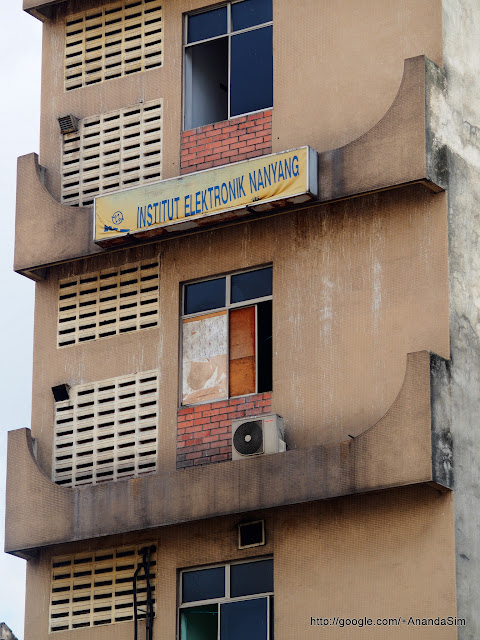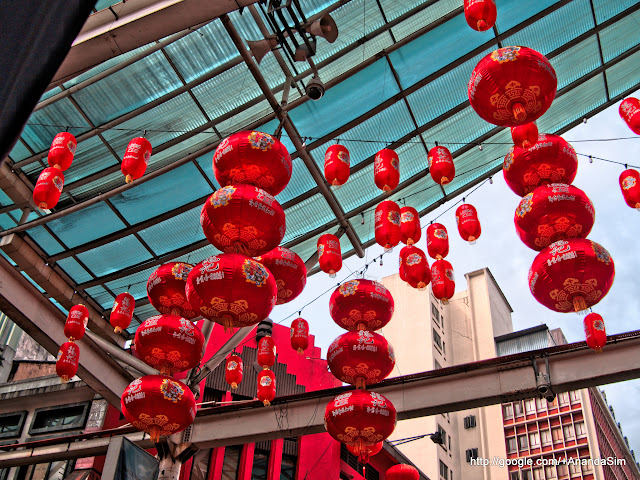Prelude
So, here I am, visiting mum and sis in KL and it's nearly Chinese New Year. I give
Robin Wong a hello and he's in KL. He's kindly booked out a sample Olympus PEN-F for me to play with. We were not expecting many of his usual shooting buddies around so close to Chinese New Year but hey, great to see
Amir S,
Nick Wade,
Bjorn,
Scott Chung and several others - apologies if I am missing mentioning anyone from today.
I must say I had a whale of a time, in enjoying a new camera, in catching up with Robin, in meeting up with some old friends and new ones and in a different environment. Thanks to all for that.
On to the PEN-F
In my opinion, the PEN-F is the most controversial camera that Olympus has launched for some time - depending on its acceptance and gaining market share, it may be the start of a new line. Why is it controversial? Here's my read. There are two camps of Olympus Micro Four Thirds owners.
- Olympus through the early PEN series - has previously offered a small, relatively lower cost series, with no Electronic Viewfinder (EVF). Old time owners like me (E-PL1, E-PM2) have got used to effective but not outrageously expensive camera bodies.
- Through the OM-D series, Olympus has garnered a host of DSLR and SLR migrators - those who are possessed with almost obsessive compulsions to speak about Image Quality, Weather Resistance, Fastest Auto Focus Speed, High Dynamic Range, Low Noise at High ISO - all those parameters that can be typed into a comparison matrix and debated noisily on the web, ad infinitum.
What does the PEN-F bring to the table? It adds a built-in EVF, a brand new sensor, classy body finish, a tilt and flip screen, a richness of dials and exquisite JPEG controls to a PEN body. In so doing, it has classed the PEN range into the OM-D features and price range. Gasps - from both camps.
- Would a traditional PEN owner buy a PEN-F?
- Would a traditional OM-D owner buy a PEN-F?
- Would a fresh casual purchaser buy a PEN-F?
- Would a camera enthusiast buy a PEN-F?
- Could a Fuji X purchaser be diverted into the PEN-F?
- Would a Samsung buyer, seek solace in the PEN-F?
I don't know. I don't represent any block of people. I can only say what I like. And don't.
What I liked
I've been an Olympus enthusiast. Through the E-330, E-510, E-620, E-PL1, E-PM2, E-M1. Along the way, I've picked up the Panasonic G2, GF-3. All the same sensor size. It would be nice if I could have eaten the last biscuit to get the tummy full than having had to pay for and munch through the preceding biscuits, but that's life.
The PEN-F body density, weight, right thumb grip feel really nice in the my hand. Robin cheerfully likes his PEN E-P5 - it is not festooned with buttons and dials like come up against your fingers. I do agree with that observation, But I thoroughly enjoyed the PEN-F today. I used it for several hours mounted with an Olympus 75mm, 17mm, Panasonic 14mm, 20mm and even a Samyang 7.5mm fish.
The actuation of the shutter, the sound and the dampened tumble inside is quite unlike my OM-D E-M1 - if it's one thing that give me happiness endorphins, that is it. Robin and friends say the shutter is similar to the OM-D E-M5 Mark 2 - I don't remember that rush of happiness but this PEN-F just does it for me. No, it's not better than sex.
The camera and lenses I used felt responsive. More responsive than my OM-D E-M1. I don't know why I felt that, but I did. Sure, I had my share of duds - motion blur, focus misses. I was shooting quickly in unfamiliar surroundings, with a new body, that's sure to happen. It's way ahead of my PEN E-PM2 experience (I've used that for more than 2 years). Even the normally slow autofocus Panasonic 20mm Mark 1 felt much better on this body.
The LCD screen is clear and displays nice tonality for the monochrome and colour images. The EVF is very, very good - I wear multi-focals and still have near reading difficulties but I enjoyed this EVF a lot. With the position of the EVF off centre, I tried the two eyes open technique - right eye on the EVF and left eye open to overview the scene. I was amazed at my brain being able to process the visuals for the 75mm and the Samyang fish. In the brief time, I could not make my brain handle the 14mm, 17mm, 20mm well enough to use the two eye technique. The EVF is very responsive.
I have got used to the "dirty nappy" technique with the PEN E-PM2 for more than 2 years. So much so, when I shoot my OM-D E-M1, I sometimes do that as well. Until today, I felt that putting eye to EVF for impromptu street shots of people looking at me a bit disconcerting. I felt braver with the PEN-F and enjoyed the eye to EVF method.
The controversial and sometimes ridiculed protruding button on the front right of the camera? That one? I was anticipating, from preceding comments and opinions, that it would bug me, abrade my finger. Most of the time, it didn't. Somehow my hand adjusted how I gripped the camera, maybe the back thumb grip helped.
The little lever to adjust JPEG shadow, highlight, midtone curves, vignette, colour strengths? I thought that interface was very well done.
What I liked less or didn't like
On the OM-D E-M1, I really wanted the twist flip mechanism for the LCD that the Olympus E-620 and the Panasonic G-2 implemented. It really suits the versatility of that DSLR-like body. But the E-M1 doesn't have it. It has a simple hinged LCD. The PEN-F has this versatile twist flip. I really wish it didn't. For people photos and street photos, the simple hinge is way more appropriate. The twist flip is just clumsy. I couldn't do the "dirty nappy" much. Sigh.
Although, I really like the PEN-F, the price is a hurdle that I have to take a couple of years to overcome. Yeah, I know. #GAS (Gear Acquisition Syndrome). If a camera makes you happy and want to shoot more, it's a unique camera. More than just a set of features on a comparison matrix. The PEN-F does that.
Do yourself and Olympus a favour. Put away that comparison matrix sheet that makes you a grumpy, "But I shoot raw only" forum impassioned, fuddy duddy. Give the PEN-F a chance to make you happy.
In
part 2, I share some images I made in the morning.
In
part 3, I play with colours
In
part 4, I muse about the quirks of design
In
part 5, I play with some processing
Part 6 is my finale
























